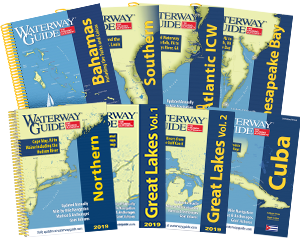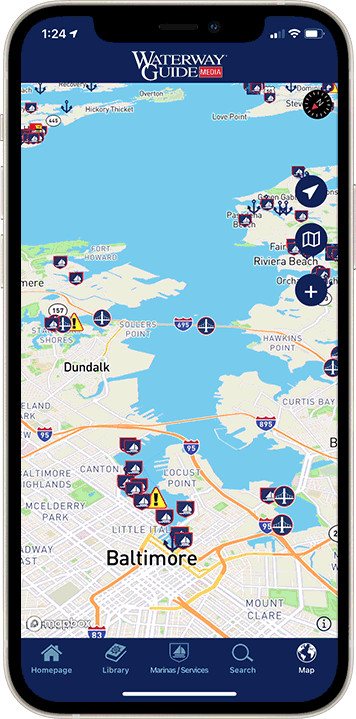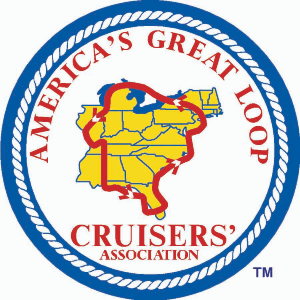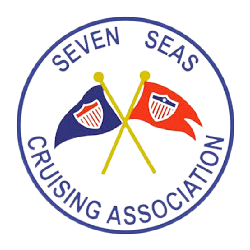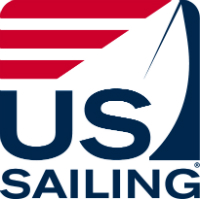 Oh really? A 29' cuddy cabin boat from Greenwich CT through the often treacherous waters of Buzzards Bay and Nantucket Shoals – once considered by mariners the most audacious water along the Eastern Seaboard? In how many days? "Two" I say, to cover the 180 nm trip. "No thank you" ...clunk, followed by dial tone! So much for my intrepid potential crew members – but then there is always "Stash" (John Stashenko), AKA the "Terminator" – former US Coast Guard Cutterman, Mechanics Mate, Fire Fighter Lt., Rescue Diver, Electrician and a "Never-Say-Never" wild and crazy guy. "When do we leave, Captain? I have to finish up a hike with my family up Mt. Washington, New Hampshire but I can be ready the next day." You got to love "The Stash Man."
Oh really? A 29' cuddy cabin boat from Greenwich CT through the often treacherous waters of Buzzards Bay and Nantucket Shoals – once considered by mariners the most audacious water along the Eastern Seaboard? In how many days? "Two" I say, to cover the 180 nm trip. "No thank you" ...clunk, followed by dial tone! So much for my intrepid potential crew members – but then there is always "Stash" (John Stashenko), AKA the "Terminator" – former US Coast Guard Cutterman, Mechanics Mate, Fire Fighter Lt., Rescue Diver, Electrician and a "Never-Say-Never" wild and crazy guy. "When do we leave, Captain? I have to finish up a hike with my family up Mt. Washington, New Hampshire but I can be ready the next day." You got to love "The Stash Man."
 Taking a 29' cuddy of any pedigree to the extremes of "Big Water" is a daunting task – but let's learn about the Dyer: They have been making this hull design since 1955, just like the Grand Banks 42 hull...and you don't keep making the same boat if it turned out to be a mistake, unless you want to be the poster child for the very definition of "insanity." I read several articles about the boat, looked at the long term forecast and weather patterns, did my own onsite safety inspection, and asked a local friend, Ensign Bergman of the Coast Guard Auxiliary, to come by the Mianus River Boat and Yacht Club in Cos Cob CT to do an annual USCG Safety Inspection – I decided it was a go. I topped off the fuel tanks at Palmer Point Marina in Cos Cob (the cheapest, freshest diesel fuel for 50 nm either side by as much as 50¢ per gallon).
Taking a 29' cuddy of any pedigree to the extremes of "Big Water" is a daunting task – but let's learn about the Dyer: They have been making this hull design since 1955, just like the Grand Banks 42 hull...and you don't keep making the same boat if it turned out to be a mistake, unless you want to be the poster child for the very definition of "insanity." I read several articles about the boat, looked at the long term forecast and weather patterns, did my own onsite safety inspection, and asked a local friend, Ensign Bergman of the Coast Guard Auxiliary, to come by the Mianus River Boat and Yacht Club in Cos Cob CT to do an annual USCG Safety Inspection – I decided it was a go. I topped off the fuel tanks at Palmer Point Marina in Cos Cob (the cheapest, freshest diesel fuel for 50 nm either side by as much as 50¢ per gallon).
We would do the trip in two days. Leg one: We planned on catching a fair tide out of Cos Cob to transit to Fairhaven Shipyard in New Bedford Harbor – a trip of 140 nm. Our cruising speed would be between 16 and 18 knots. The Dyer, Wanderer, came with he biggest single engine in the line – a 315 hp Yanmar. There is something about the traditional lobster boat design...18 knots. They just don't like to go faster. We would shampoo the boat, fill the water tanks, and fuel up again at the cheapest location (Fairhaven vies with Sea Fuels on who sells at the lowest price any particular day). The next day we would head out through Woods Hole to the Wauwinet/Head of Harbor section of inner Nantucket Harbor. For Woods Hole and the surrounding vicinity, tide plays a very important role – or maybe I should say "ROLL." the current can exceed 5 knots through the Hole, often leaving standing waves rolling across your path while lots of big and small ships are converging on you. Do your homework, as this is not a passage to be "winging it." At the confluence of these marked, distinct channels, mixing up your navaids here could add your name to a long and not-distinguished list of has-beens.
My calculations showed that traveling at 16-18 knots should put us at a fuel burn rate of 2 nm per gallon. Wanderer holds 130 gallons, so making the long leg should burn off a little under 70 gallons, giving us 60 gallons reserve on an entirely near coastal run. A good safety margin. Of course, it never happens as planned. We noticed between the two saddle bag type fuel tanks the starboard engine was drawing down while the port tank remained right at full. We checked the transfer fuel lines and return lines and everything was full open. We even exercised the ball valves to feel for any obstruction, and everything felt fine. While coming through Fisher Island Sound we began to notice a confirming heel to Port. The gauges where apparently correct...the port tank was not drawing. We pulled out the owner's manual. Would you think a revered boat maker like Dyer would have a schematic diagram show the fuel lines and pick up points with inspection ports to inspect the tanks? Nothing!
I called Dyer in Warren RI as we were going past, and they did offer some suggestions. But we had to make a decision. Each tank held 65 gallons. If the fuel was only drawing from the Starboard tank we were not going to make it to Fairhaven. On top of this, when we got out to Nebraska Shoals midway from Watch Hill to Point Judith, the winds had freshened up and we were in 4-foot choppy seas and getting tossed about. The design of the Dyer is a sharp narrow entry finishing off in a modified V. She is supposed to take head seas dry and softly. But with a noticeable 15 degree list to port, she was "belly flopping" on her flat sides – not landing on her deeper V – and the ride became uncomfortable. That lying weatherman changed his story from 1-2 foot seas to 4-5 with and Small Craft Advisory, requiring us to slow down. We couldn't chance it – Captain Bull Dog's slogan: "Better Safe than Lucky." If the gauges were right, we needed fuel. We pulled into Snug Harbor inside of Point Judith, another known vendor of fresh and inexpensive fuel. Sure enough, we took 19 gallons on the port and 29 gallons on the starboard. I said to Stash that the weather and water will only be getting worse from Point Judith to Buzzards Bay, but we could still make Fairhaven by 6 PM. Of course Stash said, "Captain, lets go for it" – so we did. Entering Buzzards Bay we were back to a 15 degree list, but I know we had the fuel to make port. I called up Fred and Billy at Fairhaven and told them to keep the fuel pumps open. We would get there, but just a little latter than first planned. Again, more fuel went into the starboard tank than the port.
To their credit, the Dyer technicians did call back. They suggested trying to send the fuel on its return instead of back to the full tank, and shutting off that return valve, forcing the returning fuel back to the slowly emptying tank....a worthy solution. But then we noticed that the port tank was emptying more rapidly than the starboard and the boat was listing the other way, but not nearly as bad. I concluded that a pick up point must be clogged. Do you see why inspection ports and fuel line diagrams are so important?
 As best as I could guess, sediment may have collected around the take up point in the port fuel tank and, while some fuel was being sucked up, there was likely an obstruction. In past deliveries, I have found that Star Tron's Enzyme Diesel Fuel Treatment was good at dissolving the clog like Drano. New boat owners don't want to hear about "problems," so I try to fix issues myself if I can do it with little expense.
As best as I could guess, sediment may have collected around the take up point in the port fuel tank and, while some fuel was being sucked up, there was likely an obstruction. In past deliveries, I have found that Star Tron's Enzyme Diesel Fuel Treatment was good at dissolving the clog like Drano. New boat owners don't want to hear about "problems," so I try to fix issues myself if I can do it with little expense.
We decided to see if the problem would fix itself on the 46 nm run from Fairhaven to Nantucket. At least with the full tanks the boat started out level. My preference for transiting Woods Hole is to start at the waning hour of a high tide. Some folks like slack water, and others like the joy ride of a full flow of current. Not me. I see the crew of power vessels in absolute terror going full-throttle down narrow fairways, very close to other boaters, with the current laying over the buoys and the scary-looking standing waves...way too much excitement for me. We fortunately encountered flat seas, having heard that the winds would be changing overnight from a northeast breeze to southerlies. It worked out just right – we rode a fair tide all the way to Nantucket.
Just another point about the Nantucket entrance and the seedy remnants of a proud breakwater: If you enter Nantucket Harbor from the Safe Water Mark when there is a very high tide, and perhaps impaired visibility due to fog or nighttime, be very aware that the breakwater will largely be underwater and not visible, like in Charleston. It's still there! You just won't see it. George Bassett, Harbor Master Emeritus of Nantucket Boat Basin, actually posted a descriptive video warning of this issue (image on right). Please exercise caution.
One other thing I will add about the trip: Piloting from the mouth of Nantucket Harbor to Wauwinet/Head of the Harbor is an extremely arduous task with many spots with as little as 2 feet of water. ActiveCaptain with the latest downloads of NOAA Charts on my tablet gave me the best course. The Raymarine data and my laptop were less than acceptable.
Captain Bull Dog almost under any circumstance loves Nantucket. It is just the perfect seaport destination – and Nantucket Boat Basin is my favorite. I saw old George Bassett (now retired) beat me there this year, but I couldn't find him or his daughter, Kristy. I had a ferry to catch. One disappointment was that I visited the Angler's Club when I walked over to the boat basin. I had been a temporary member there 2 years ago for a fishing tournament. We boaters pride ourselves on being hospitable and eager to assist fellow boaters. I stopped by for a sandwich before we headed off, dressed in full merchant marine uniform, and was directed to the door by the club's manager. In my community we grew up with better manners. I will not be going back. That was a huge disappointment as the Angler's Club was always a big Port of Refuge for visiting Captains who where members of other clubs.
A belated Happy Father's Day to you all and I will be writing about my trip from Stratford, CT to Baltimore on a boat bound for Saudi Arabia, and then hopefully another boat going from Mystic to Wilson NY – down Long Island Sound, up the East River and Hudson to Waterford, then the Erie Canal to the Oswego to Lake Ontario, then to Wilson via the Niagara River. It is another great trip. Want to come?
Captain "Bull Dog" Thal
Professional US M-M Master Captain
Pro Captains Delivery Service
Entire East Coast from Fla. to the Great lakes
Sail or Power
cell: (203) 550 1067
email: s.thal@snet.net



